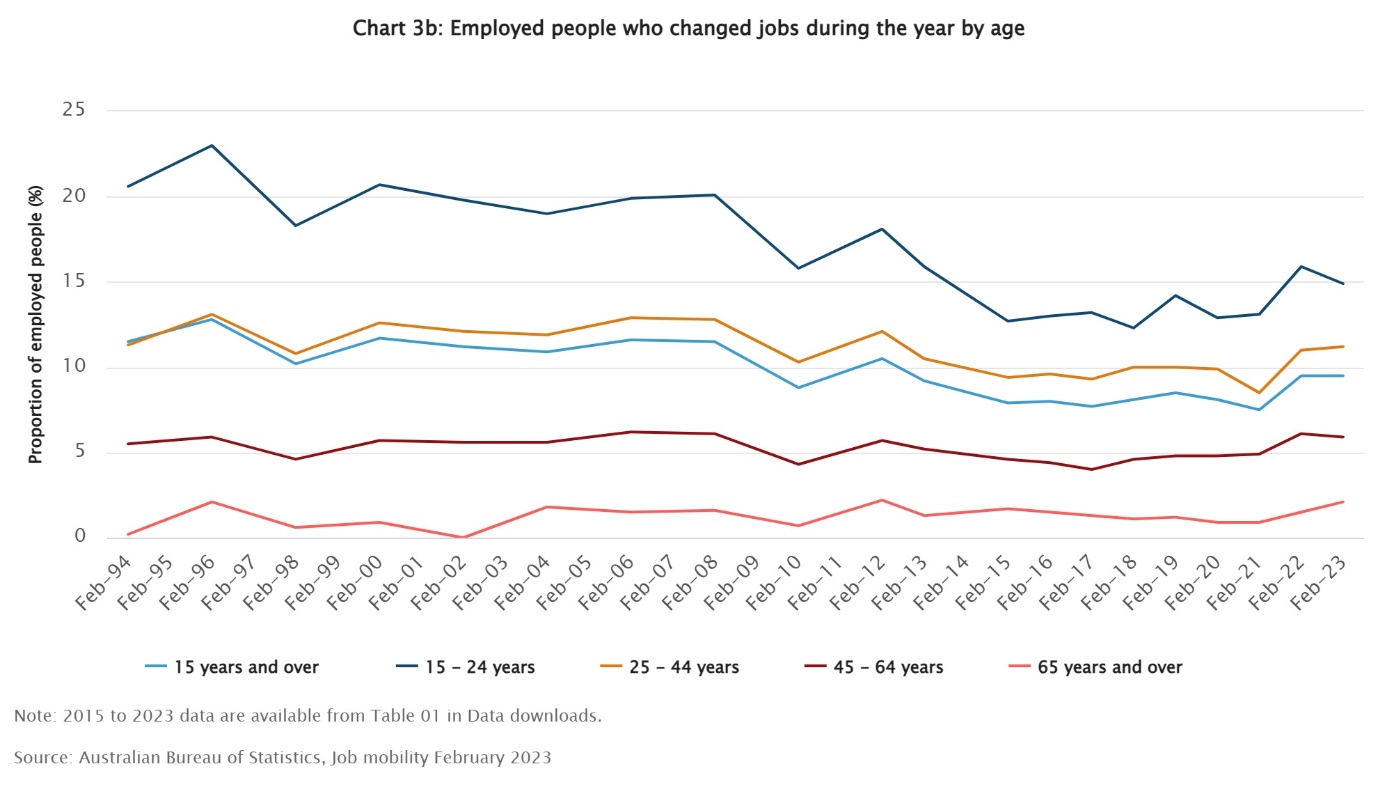
'The real question is ‘Why have so few people been quitting?'

There were 1.3 million people who changed jobs in Australia during the year ending February 2023, according to the Australian Bureau of statistics. That equates to a 9.5% job mobility rate, a figure Australia has reached for the second time in a row — and it’s the highest job mobility rate we’ve seen in a decade.
Most of the people who changed jobs were younger Australians aged 15 to 24 years old (14.9%), followed by 25 to 44-year-olds (11.2%) and 45 to 65-year-olds (5.9%).
And while there are several reasons why young people change jobs more often than their elder counterparts, the challenge for HR leaders is finding ways to attract and retain that talent.
Job mobility among younger Australians
Young people always move jobs more frequently no matter what the time or economic climate, Mark Wooden, Professorial Fellow at Melbourne University told HRD Australia. This is because many of them haven't settled down on a career or vocation,
“You usually see this pattern – this is stereotypical – but young people enter the labour market when they’ve finish education or often they enter the labour market while their studying,” he said. “There's lots of bouncing around casual jobs while they're studying.
“Then they try to get a foothold into the labour market; they're inexperienced, they don’t really know what they like. They might think they do, and they get a taste of it and discover is not quite right. They search for a while and hopefully they find a good fit. And then you will see people then stay with employers for a long time on average.”
But, more broadly, job mobility is much lower now than it has been in the past, Wooden said.
“What's happened is, in the last year, or the last time the ABS did [the research], there was a kickup – mobility rose,” he said. “But it rose from an all-time low.”
Pandemic influence on job mobility
The numbers rose because we came out of the COVID pandemic recession, Wooden said.
“The economy came zooming out of that and we went down to 3.5% unemployment rate. But, more importantly, job vacancies went through the roof.”
While the COVID pandemic shutdown hampered the entry of migrants, including international students into Australia to work, it created more job vacancies in the country.
The labour market “went very hot, very quickly,” he said, and that’s usually a time when people can think about getting another job that pays higher wages.
Lower rates of turnover
But there has still been a lower job mobility rate.
“The interesting thing is, if we were to compare ourselves with what happened in, let's say, the pickup in the 80s, coming out of ‘83 recession, or what happened coming out of the ‘93 recession or in the 2000s, you will see that mobility rates are far less than back then,” Wooden said.
“The long-term trend has been downward — so the real question has been ‘Why have so few people been quitting?’ And so labour markets look a lot less dynamic; people are staying with the firms longer, which of course is what firms want.”

While job mobility is good for the economy, HR leaders are looking to retain their workers, Wooden said.
“Maybe one of the reasons it's been declining has been that firms have done such a wonderful job in terms of the HR climate,” he said. “You don't see workers going on strikes like they used to – it's a very different world than in the 1970s. HR is a lot more sophisticated, there's a lot more learning, so that they're better at it.”
The pros and cons of job mobility
One major benefit of job mobility for a business is that new people bring fresh ideas into a company, he said. But the challenge for HR teams is that it also creates more work with the recruitment and screening process.
To attract employees, businesses have to be competitive.
“You're competing for your workers and therefore you have to offer the best deal you can if you want to keep them,” Wooden said. “And that includes their pay but it also includes all the other things.”
According to Robert Half, almost two-thirds (62%) of Australian employees say non-salary benefits have become more important to them than base salary when considering a job offer. Some popular incentives have been offering discounts on fitness memberships or offering novated car leases.
And once you’ve got your talent, retaining them can be done by offering ongoing training, providing more flexibility and having a good workplace environment.
“You can still retain your workers very cheaply by creating an environment where people want to be there,” Wooden said.